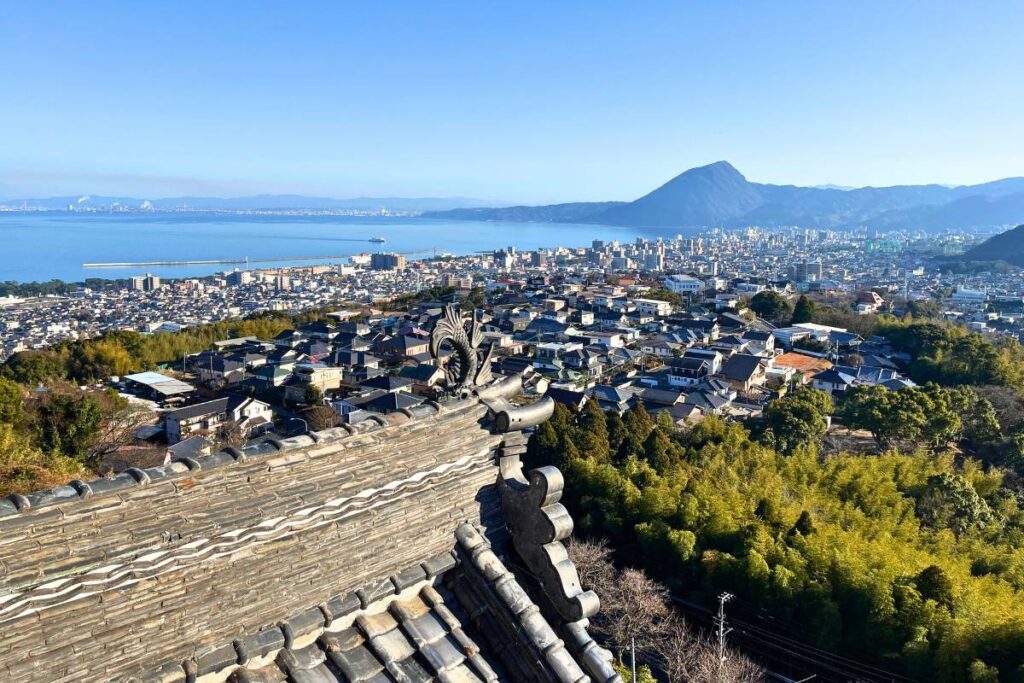
Are you in search of the perfect Beppu itinerary? Then look no further! Because I’ve got you covered with this ultimate guide to 2 days in Beppu, Japan!
Known as the Onsen Capital of Japan, Beppu is home to numerous thermal spas and vibrant picturesque hot springs. In fact, Beppu has the highest number of hot springs in Japan and the second-highest number in the entire world!
But that’s not the only appeal here. From stunning ocean views to serene bamboo forests, abundant wildlife, and delectable local cuisine, this resort city offers much to be discovered and explored.
As a matter of fact, Beppu has been at the top of my bucket list since moving to Japan. And while it took me about a year to get here, I’m glad I finally made it!
It’s such an incredible destination – one that is sure to surprise, excite, and inspire you, just as it did for me.
So, without further ado, let’s get to it and start planning your perfect 2 day Beppu itinerary!
*Please note: This post contains affiliate links to trusted partners. If you make a purchase using these links, I will earn a commission at no extra cost to you. Thank you for your support!
Planning a last-minute trip to Beppu?
Here are a few quick recommendations for you!
I suggest booking these services and activities in advance!
🚅 Getting There:
– Japan Rail Pass (Great option if you plan to travel all over Japan)
– Individual Shin Tickets (Will likely be cheaper if you don’t plan to visit many cities)
– Private Airport Transfers (For those who prefer to travel by car)
🛏️ Hotels:
– Super Hotel Beppu Ekimae (Mid-range hotel in a great location near the train station)
👣 Activities & Tours:
– 7 Hells of Beppu (Discounted combo pass for all 7 hot springs!)
– Guided Tours of Beppu (There are lot of options to explore!)
Best Time to Visit Beppu
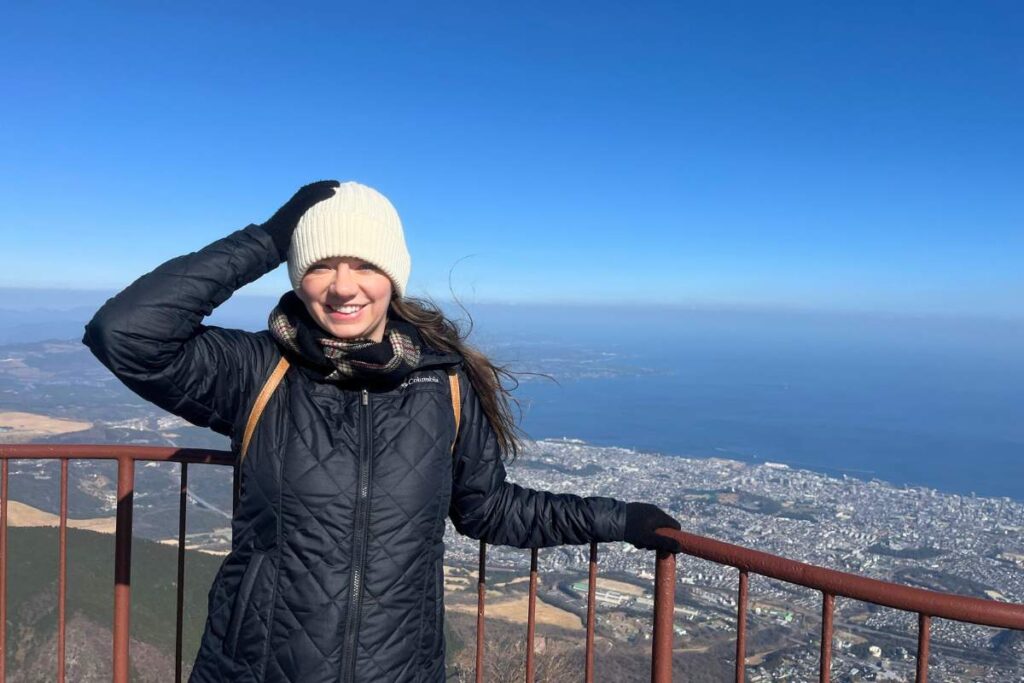
Despite the chilly weather, winter is still a great time to visit Beppu.
While you can visit Beppu any time of the year, the city is best experienced during the fall and winter months.
During this time, you can expect to encounter fewer crowds and more mild temperatures – even in the depths of winter, it doesn’t get too cold here.
That being said, if you do happen to find yourself feeling a bit chilly, you can simply visit an onsen. The natural hot springs of Beppu are absolutely perfect on a cold wintery day.
Aside from this, spring is another great time to visit Beppu. Just be aware that you are likely to experience larger crowds, especially around cherry blossom season.
And finally, there’s summer, which honestly I don’t really recommend unless you have no other option.
Summer in Japan is hot to begin with – add in the constant steam and heat from the hot springs, and Beppu can become quite unbearably warm.
Holidays in Japan
Japan has a few major national holidays that significantly impact travel. These include Golden Week (end of April – beginning of May), Silver Week (mid-September), and New Years. Around these holiday periods, domestic travel peaks, prices increase significantly, and businesses may temporarily close down. Given this, I generally recommend, if at all possible, that visitors avoid travel to Japan during these times.
How to Get to Beppu
Beppu is located along the north-eastern coast of Kyushu Island in Oita Prefecture.
It’s situated about 2 hours away from Fukuoka by train and 4 hours away from Nagasaki by bus.
There is also a nearby airport, Oita Airport (OIT), that services the city. It lies approximately 50 kilometers up the coast from Beppu.
The fastest way to get from the airport to Beppu is by car or public bus, both of which take about an hour.
There is also a train you can utilize; however, the train station, Kitsuki Station, lies about 30 minutes away from the airport. So it can be a bit inconvenient, as you’d need to take a taxi or bus to get there first.
If you do decide to travel via train, there’s a direct route available that goes from Kitsuki Station to Beppu Station. The transit time for this is approximately 30 minutes.
Pro Tip: If you don’t have time in your itinerary to include a separate stopover in Beppu, consider joining a guided day trip from Fukuoka instead!
How to Get Around Beppu
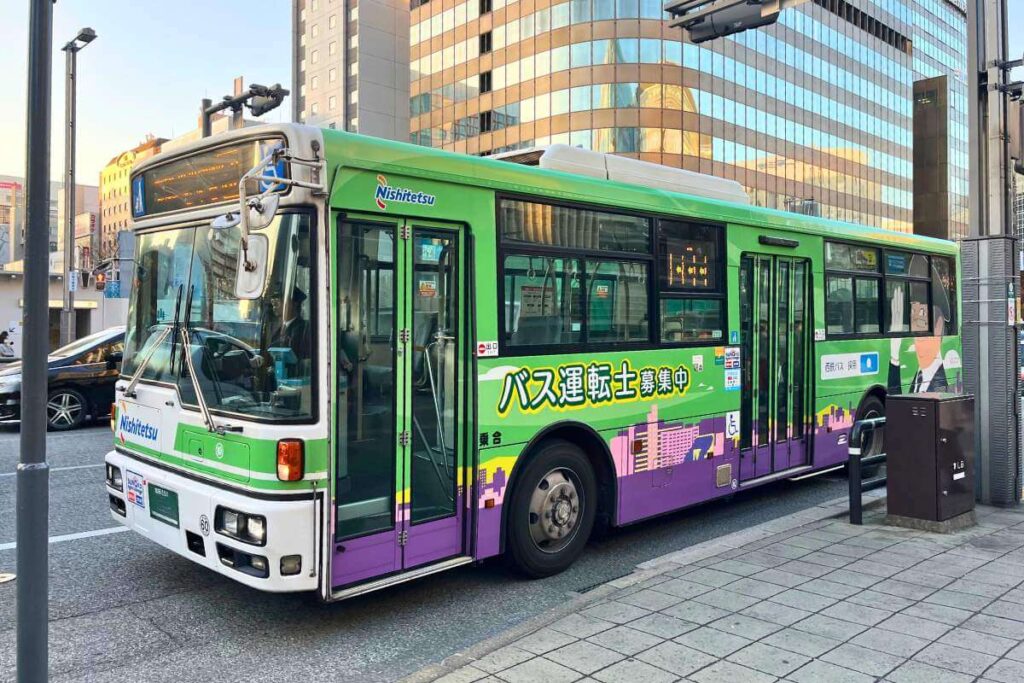
Buses are common in Beppu.
If at all possible, I highly recommend renting a car while you’re in Beppu. Or relying on taxis.
Although public transportation is available, it’s mostly done by bus. So transit times can take longer than expected.
On top of this, the attractions in Beppu are quite spread out, so it’s generally easier if you have your own means of transportation.
That being said, if driving isn’t an option, public transportation in Beppu is still widely available and very reliable.
It’s possible to visit all of the destinations mentioned in this itinerary by bus – even the nearby town of Yufuin.
To utilize the buses in Beppu, it’s best to purchase an IC card, which is a prepaid, refillable transportation pass.
These passes are accepted on most local buses and trains in Beppu and can be used in many major cities across the country, including Fukuoka, Tokyo, Osaka, Hiroshima, etc. They can also be used for the subway in larger cities.
There are some exceptions to this, however, that you’ll want to keep in mind.
IC cards cannot be used on Shinkansen (bullet trains), limited express trains, and highway buses. These forms of transportation typically require their own separate ticket.
And finally, to help you navigate your way through Beppu (whether by bus or car), I suggest using Google Maps. This app is one of the best travel apps for Japan, as it is synced with local public transportation and provides accurate, up-to-date transit information.
Pro Tip: If you plan to drive while in Japan, be sure to obtain an International Driver’s Permit before you arrive!
Beppu, Japan Map
To help you plan your trip, here’s a map overview of all the places mentioned in this Beppu itinerary.
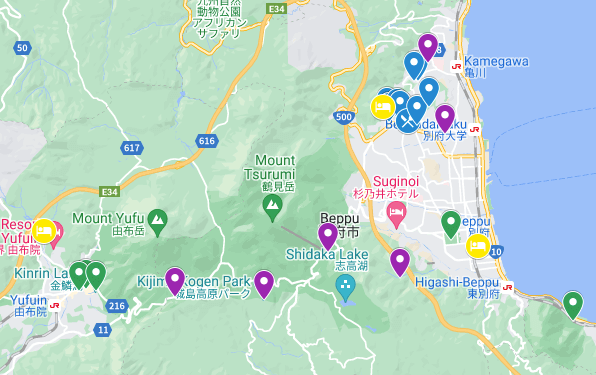
If you’d like to view an interactive version of this map, click here!
Beppu Itinerary: A Quick Overview
Don’t have time to read the article in full? Here’s a quick recap of the top things to do in Beppu.
- Day 1 – Beppu City Highlights: Visit the 7 Hells of Beppu and sample hell-steamed cuisine. Experience a local Beppu onsen and discover Kifune Castle, if time allows.
- Day 2 – Beyond Beppu: Explore Beppu Park and/or Takasakiyama Natural Zoological Garden. Travel to Yufuin and visit the Floral Village, Yunotsubo Street, and Lake Kinrin.
Beppu Itinerary: Explained
On that note, let’s dive in and discuss in detail the perfect 2 day itinerary for Beppu. I’ve included numerous options for you to consider, as well as some alternative attractions. Feel free to pick and choose and adapt this itinerary as you see fit!
Day 1: Beppu City Highlights
The first day of your Beppu itinerary will center around the city’s most famous destinations. I recommend that you spend your morning exploring the Beppu Hells. Then, depending on how much time you have leftover, you can experience some of the city’s other activities.
Explore the 7 Hells of Beppu
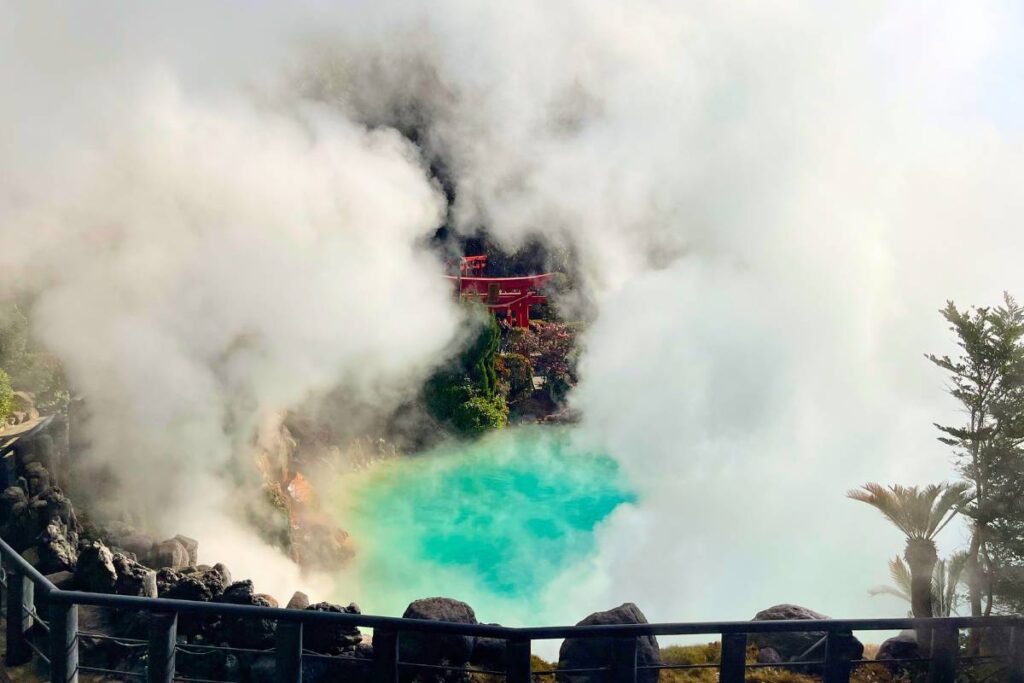
A steamy onsen at Umi Jigoku.
Beppu’s Jigoku, also known as Beppu’s Hells, are seven hot springs that are located within the city center.
The star attraction of Beppu, these springs are not open for bathing, but instead are available for viewing – and for good reason, many of them are absolutely gorgeous.
You can opt to visit them all or just a few, it’s up to you! Either way, here’s a quick overview of what you can expect:
- Umi Jigoku: Known as the “Sea Hell,” this hot spring features bright blue waters, an abundance of steam, and its own set of torii gates.
- Oniishibozu Jigoku: Dubbed the “Shaven Monk’s Head Hell,” this hot spring contains several pools of gray bubbling mud, as well as a serene and relaxing foot bath.
- Kamado Jigoku: Called “Cooking Pot Hell,” this hot spring consists of several brightly colored hot springs, as well as a mini food court, where you can sample hell-steamed cuisine.
- Oniyama Jigoku: Appropriately named “Crocodile Hell,” this spring is home to its own group of crocodiles and features a very steamy hot spring pond.
- Shiraike Jigoku: Known as the “White Pond Hell,” this hot spring features a milky blue/white pond and a serene, peaceful garden.
- Chinoike Jigoku: Dubbed the “Blood Pond Hell,” this hot spring is home to a large orange pond and features its own extensive souvenir shop.
- Tatsumaki Jigoku: Called “Tornado Hell,” this hot spring isn’t a pond, but rather a geyser that erupts every 30-40 minutes.
I personally visited all seven of the hells. However, in retrospect, I don’t feel that it’s necessary to do so. If I were to do it all over again, I’d probably just pick the ones that interest me the most.
That being said, there is a discounted pass available for those who’d like to see them all. This pass allows for one-time entry into all seven hells of Beppu.
🌟 Interested in learning more about Beppu’s hot springs? Check out my full guide to the 7 Hells of Beppu!
Sample Hell-Steamed Cuisine
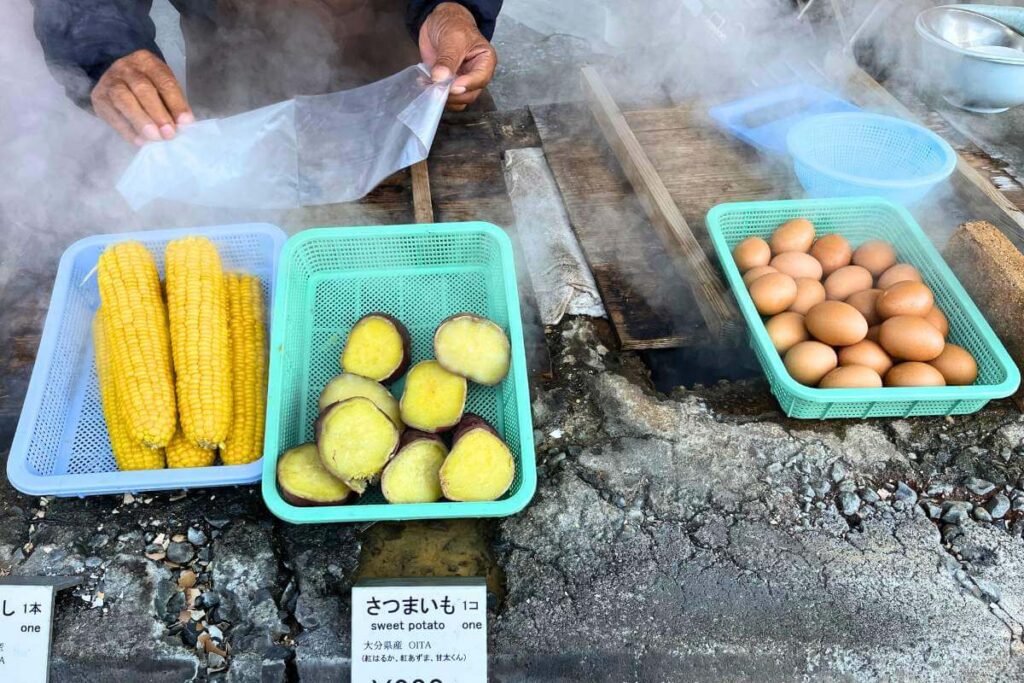
No trip to Beppu is complete without sampling some of the city’s hell-steamed cuisine.
Using steam from the local hot springs, vendors and restaurants cook a variety of food that you can try. From corn on the cob to hard-boiled eggs, seafood, chicken, pork buns, and a variety of vegetables, the options here are endless.
You can sample this unique cuisine at many of the hells and from vendors along the streets of Beppu. Or, if you’d prefer to have a sit-down meal, head on over to Jigoku Mushi Kobo Kannawa.
Situated near Shiraike Jigoku, this restaurant specializes in hell-steamed cuisine and offers a plethora of meals for you to choose from.
Just be aware, it is quite popular, so it’s best to get there early – otherwise, you may end up waiting a while!
Experience a Local Onsen
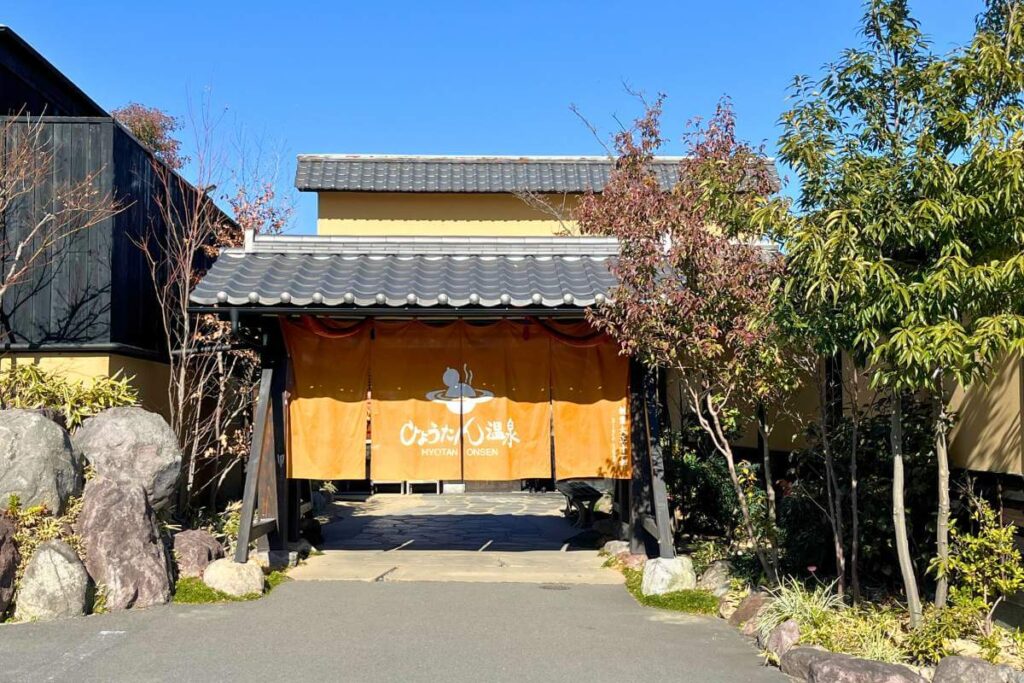
Hyotan Onsen, Japan’s only three-star Michelin hot spring.
Now that you’ve seen a few onsens, it’s time to hop in and experience one for yourself!
There are several bathing facilities spread throughout the city that you can try. However, the one that I recommend is Hyotan Onsen, Japan’s one and only three-star Michelin onsen.
Here, you’ll find a variety of experiences to choose from including public spring baths, waterfall baths, steam baths, private baths, and sand baths.
If it’s your first time visiting an onsen in Japan, I recommend booking a private bath, if one is available.
Public baths in Japan are divided by gender and are clothing-free (no, you can’t even wear a bathing suit). So it can be quite an adjustment to make if you’re not used to walking around au naturel.
While you are still expected to remain uncovered in a private bath, you’ll at least be by yourself or with your family/friends, if you so choose.
Pro Tip: If you opt to do a sand bath, be aware that it is connected to the public bath. So you’ll want to purchase a combo ticket for both.
Visit Kifune Castle
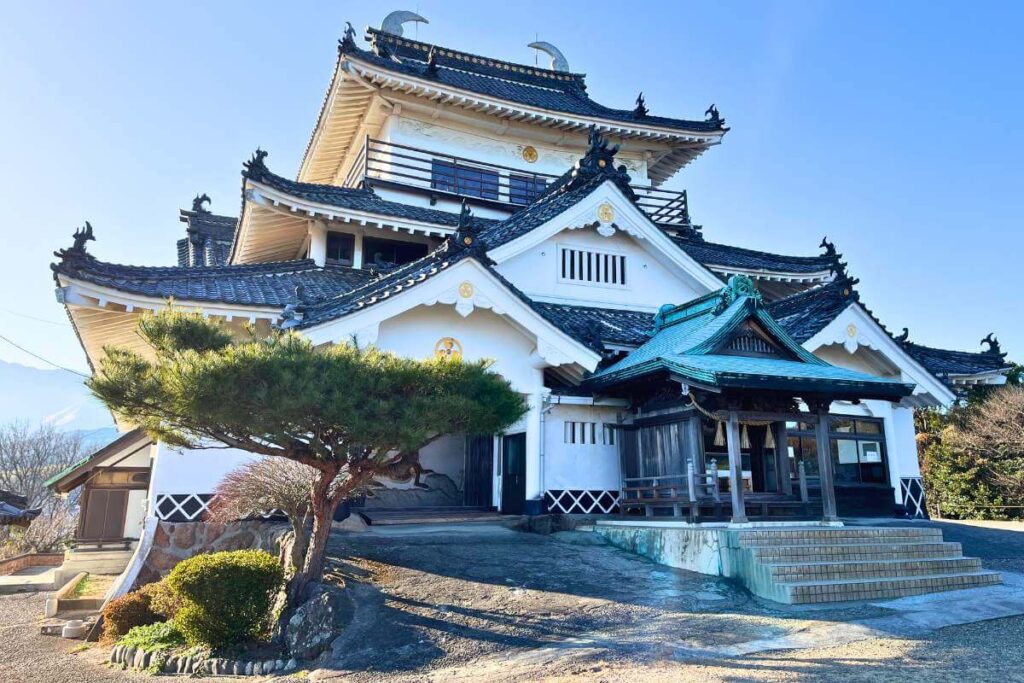
If you have time to spare at the end of your day, head on over to Kifune Castle.
Recently restored and rebuilt in 1957, the castle overlooks Beppu and offers incredible views of the city.
You can take a guided tour to learn more about the castle and meet its official guardian – an albino python.
Tours are offered in both English and Japanese. And are required in order to enter the castle.
Day 2: Beyond Beppu
Today, you’ll venture beyond the city center to explore the outskirts of Beppu and the nearby town of Yufuin. Since many of the attractions in Yufuin don’t open until later in the morning, I suggest beginning your day at Beppu Park and/or Beppu Monkey Park before heading out of the city.
Stroll Through Beppu Park
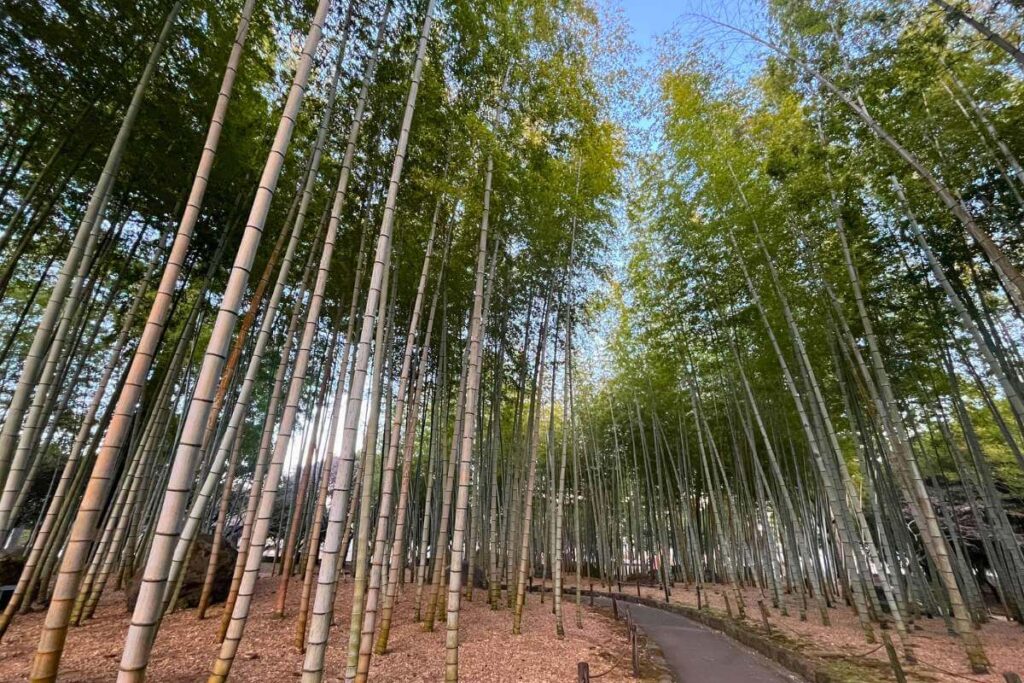
Spanning 27 hectares, Beppu Park is a large public green space that is home to a variety of greenery and attractions.
Here, you’ll find several tennis courts, walking trails, art installations, historical monuments, gardens, and forest groves.
The area is especially known for its sakura (cherry blossom) and plum trees, which explode with color during the spring months.
We also can’t forget about the bamboo forest that lies just within the park. While small, it’s a great alternative to the more touristy Arashiyama Bamboo Forest in Kyoto.
Hang Out with Monkeys at Takasakiyama Natural Zoological Garden
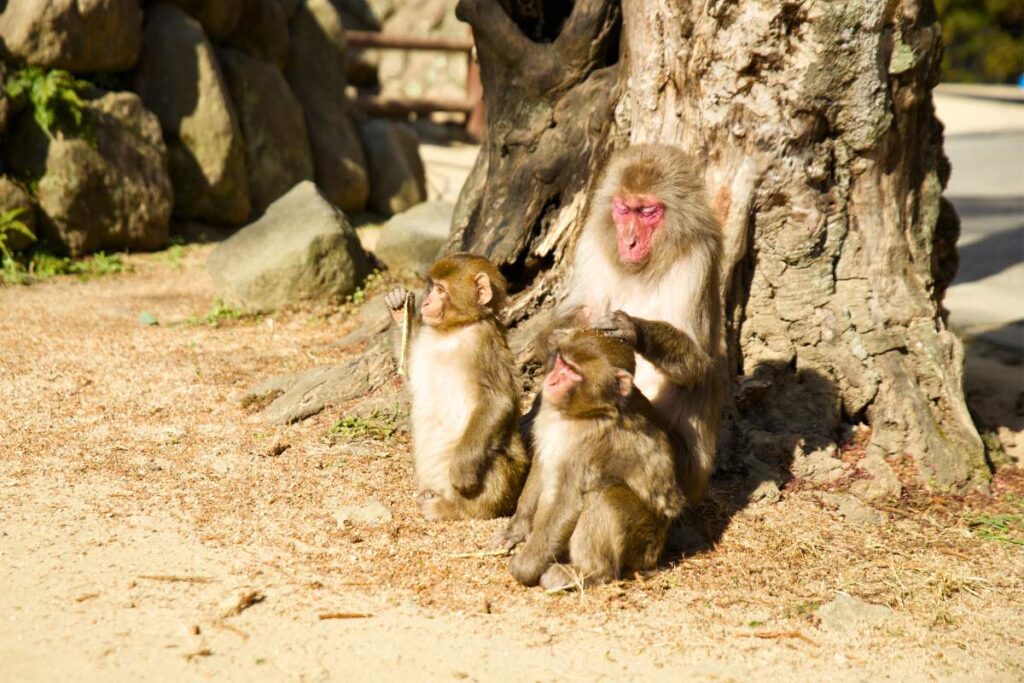
Also known as Beppu’s Monkey Park, Takasakiyama Natural Zoological Garden is a nature reserve that is frequented by troops of wild Japanese macaque monkeys (aka snow monkeys).
These monkeys actually live up in the mountains around Beppu, but come down to the park during the day to hang out and eat treats that are offered up by the staff.
The park was originally established as a way to help mitigate conflict between the monkeys and local farmers.
Apparently, the monkeys kept traveling down from the mountains to eat (and destroy) the crops of local farmers. To prevent this, the reserve was built. And treats, as well as play equipment were utilized to entice the monkeys away from the local farms.
Today, three different troops of monkeys live in the mountains, however, only two of them come down to the park. They take turns visiting the park throughout the day. Typically, one will come in the morning and the other will stop by in the afternoon.
Pro Tip: Remember, the monkeys here are wild! So be aware and be cautious. They will run around your feet and get close to you, but no matter what you should never touch them or feed them. It is also advised that visitors avoid direct eye contact with the monkeys, as this can trigger aggressive behavior.
🌟 Looking for more monkey encounters? 🐒 Be sure to also check out the Snow Monkey Park in Nagano!
Discover Yufuin’s Floral Village
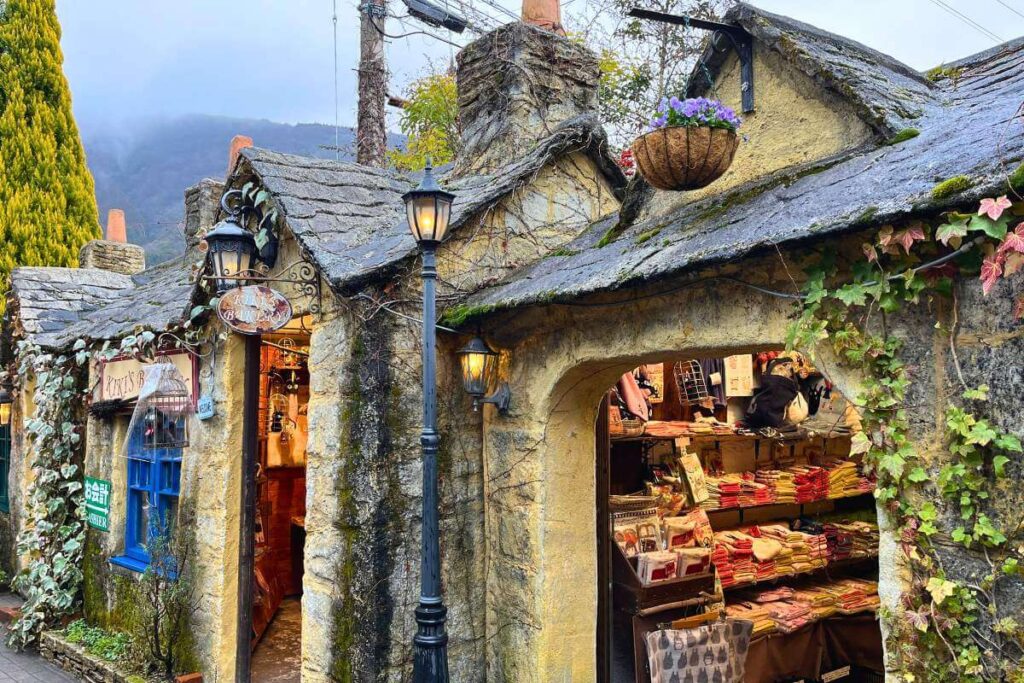
Situated 35 kilometers inland from Beppu lies Yufuin, a small town known for its onsens and fairytale-like attractions.
In fact, the town’s most famous destination is its Floral Village, which was influenced by Harry Potter.
The entire village and all of its buildings are molded after the English Cotswold villages that are featured in the movies.
In addition to its magical ambiance, this mini theme park is also home to a number of shops, cafes, and an on-site hotel.
Shop For Souvenirs Along Yunotsubo Street
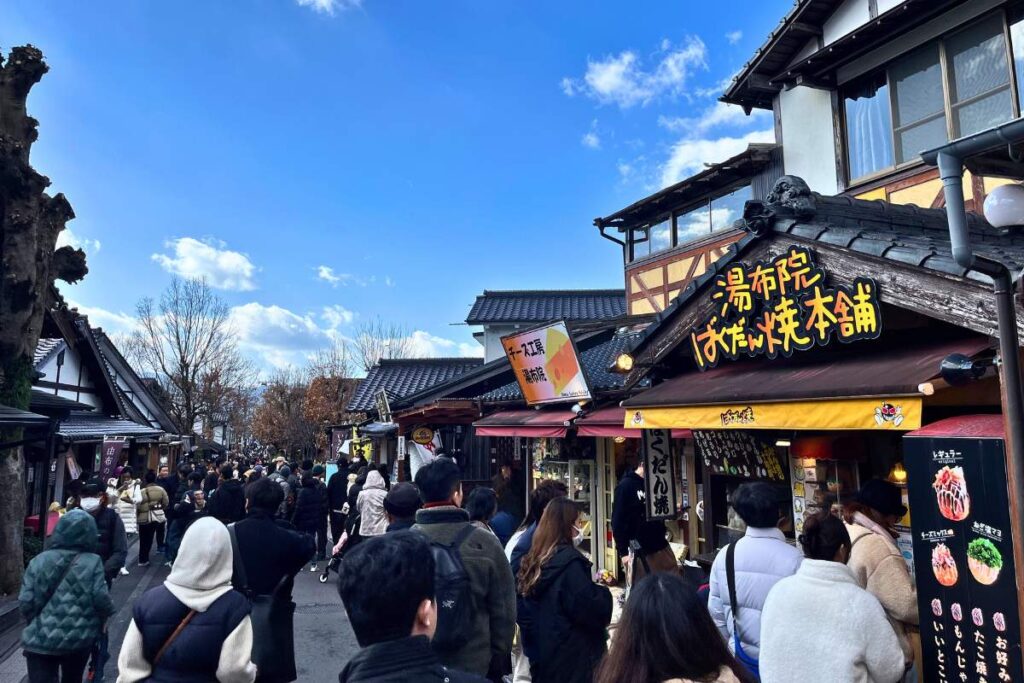
If you’d like to bring home some Japanese souvenirs, then be sure to check out Yunotsubo Street.
Traveling through the center of town, Yunotsubo is the main shopping street in Yufuin.
Here, you’ll find a variety of shops, cafes, restaurants, art galleries, and more.
Many of the stores offer regional specialty products from the Oita Prefecture, but you can also find traditional Japanese souvenirs as well.
Regardless of what you’re looking for, it’s a great spot to pick up some gifts for yourself or your loved ones back home.
Go For a Walk Around Lake Kinrin
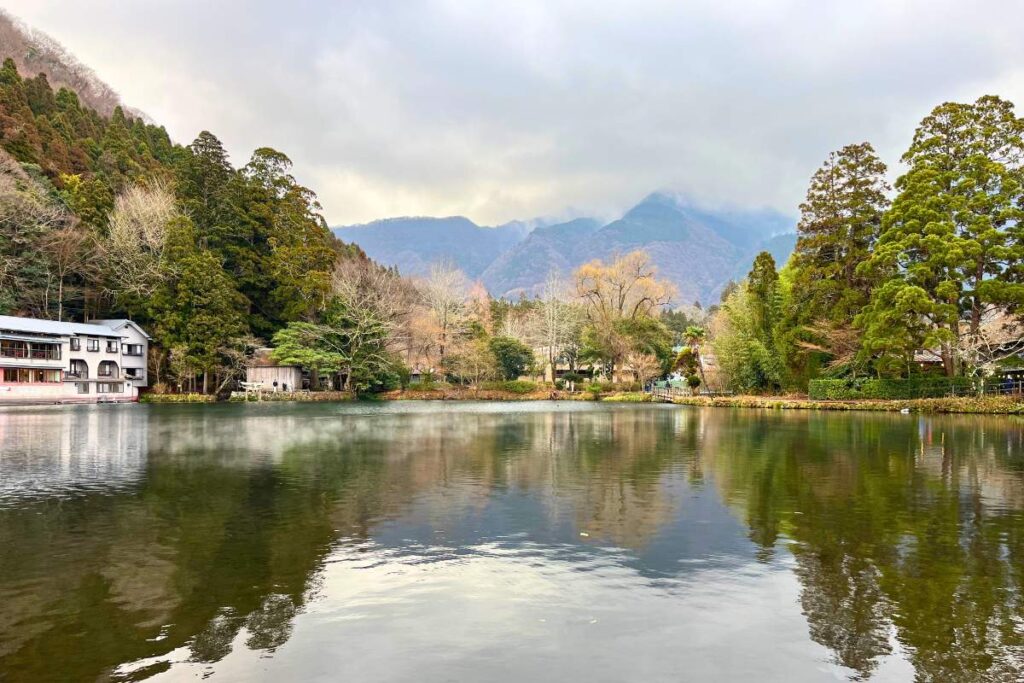
Made famous for the morning mist that rolls off of it, Lake Kinrin is a small but scenic body of water.
Fed by hot springs from below and freshwater from the mountains, the lake is a unique natural phenomenon – one that tends to be warmer than expected year-round.
There’s a walking trail that travels around the length of the lake, as well as several benches and viewing points.
Meanwhile, around the back end of the lake, you’ll find a small shrine. Be sure to walk behind it and check out the floating torii gate that sits just offshore.
Other Things to Do in Beppu
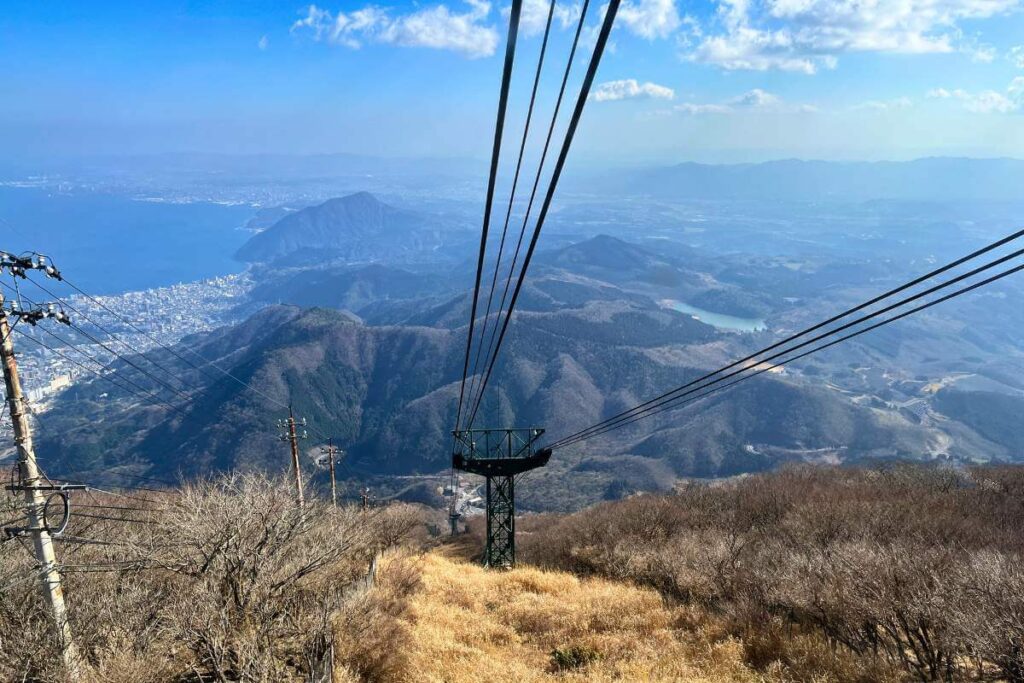
View from Beppu Ropeway.
Interested in adjusting this Beppu itinerary? Or maybe you’re contemplating a longer stay? If so, consider visiting some of these other popular attractions as well!
- Beppu Ropeway: The largest sky tram in Kyushu, the Beppu Ropeway travels 1300 meters above sea level to the summit of Mt. Tsurumi. Known as a Shinto pilgrimage site, the mountaintop is home to a number of religious shrines and statues, as well as several lookout points.
- Jigoku Onsen Museum: Situated in Kannawa District, this hell hot spring museum offers a glimpse into the history of Beppu’s onsens. Here, you’ll learn about the creation of the onsens and will discover the significant role they play in Japanese culture.
- Onbara Falls: A hidden gem located just outside of Beppu, Onbara Falls is a stunning cascading waterfall. While you’ll need a car to reach the trailhead, the hike to the falls is only about a mile-long round trip.
- Aso-Kuju National Park: A small section of Aso-Kuju National Park lies between Beppu and Yufuin, encompassing Mount Yufu and Mount Tsurumi. Here, you’ll find several hiking trails that offer incredible views of the mountains and surrounding countryside.
- Hachiman Kamado Shrine: Believed by some to be connected to the famous “Demon Slayer” anime, Hachiman Kamado is a historic shrine that dates back to 727. Situated on the outskirts of the city, the shrine offers great views of Beppu and Beppu Bay.
- Kijima Kogen Park: Located along the slopes of Mt. Tsurumi, Kijima Kogen is a popular and scenic amusement park. Here, you’ll find a variety of rides, including Japan’s very first wooden roller coaster.
- Oita Fragrance Museum: Focused on the history of perfumes, the Oita Fragrance Museum offers a look into the development and use of fragrances throughout time. In addition, visitors can join an interactive class where they can create their very own perfumes and signature scents.
🌟 Spending more time in Kyushu? Be sure to check out my complete Kyushu itinerary!
Where to Stay in Beppu
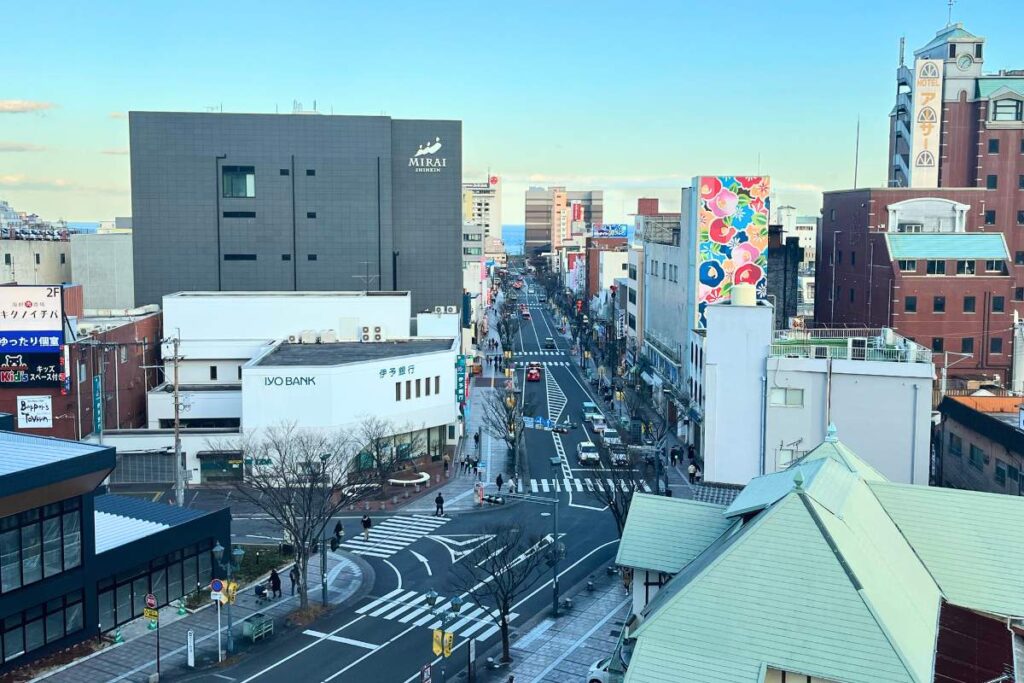
The area around Beppu Station is a great place to stay.
The city of Beppu is much smaller compared to other destinations in Japan, so you won’t have as many options when it comes to accommodations. But those that are available are comfortable, convenient, unique, and affordably priced. That being said, here are some of the most popular places to stay in Beppu.
- Beppu Station: Situated in the heart of the city, the area around Beppu Station is home to numerous hotels, restaurants, cafes, and bars. Offering a chill, laid-back vibe, it’s not your typical city center.
- Kannawa: Encompassing five of Beppu’s seven hells, Kannawa is a great place to stay if you’d like to have easy access to the city’s onsens. Here, you’ll find a variety of accommodations, including high-end hotels, traditional ryokans, and Airbnb rentals.
- Yufuin: Offering a quieter and more calmer atmosphere, Yufuin is a great option if you’d prefer to escape the crowds. On top of this, it’s home to several hotels and Airbnbs that include private onsens.
What to Eat in Beppu
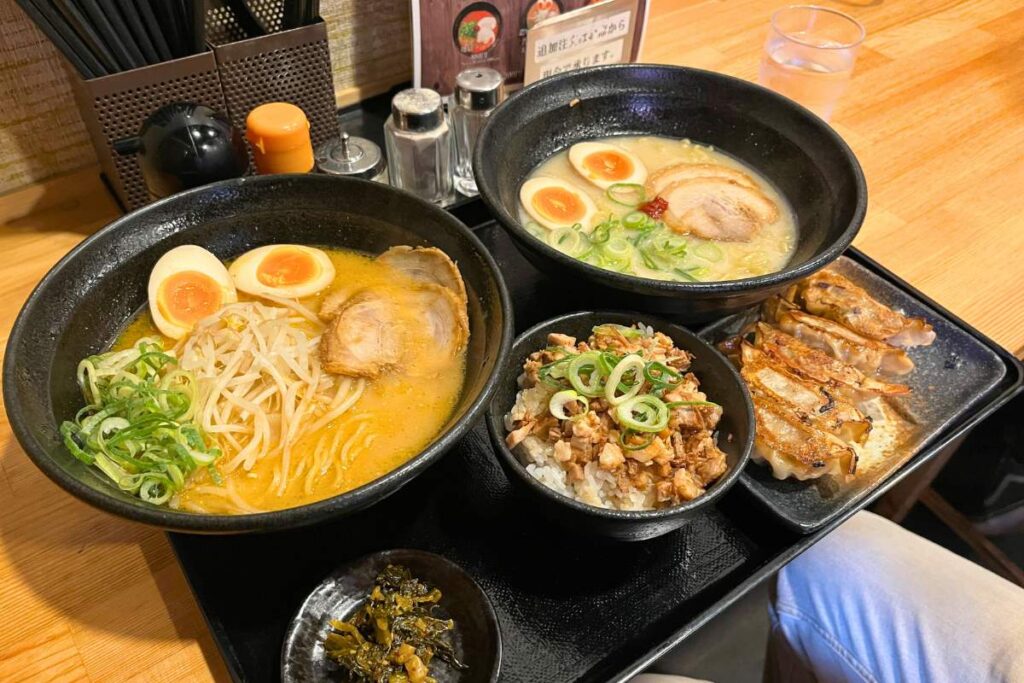
Ramen with gyoza and Japanese fried rice.
While hell-steamed food is a must-try for anyone visiting Beppu – at least for the experience alone – the city also offers a number of delectable regional cuisines that you can sample. Here are a few of my favorites!
- Toriten: Also known as chicken tempura, toriten is a regional dish popular in Oita Prefecture. Flavored, battered, and deep-fried, these chicken bites are incredibly flavorful and delicious.
- Toriten Soba: Toriten soba is exactly what you think it is – soba noodles served with chicken tempura. It’s a unique combination that you won’t find in many other places.
- Kabosu: Kabosu is a local citrus fruit native to Beppu and Oita Prefecture. It’s typically mixed into dressings and marinades and served with a variety of traditional Japanese dishes.
- Seafood: Given the city’s location along the coast, it should come as no surprise to hear that Beppu is home to some pretty amazing seafood. From sushi to shrimp, clams, crabs, and oysters, you can find just about everything here!
- Ramen: As it is throughout most of Japan, the ramen in Beppu is amazing! It’s the perfect dish to have after exploring the city on a cold winter day.
Frequently Asked Questions About Planning a Beppu Itinerary
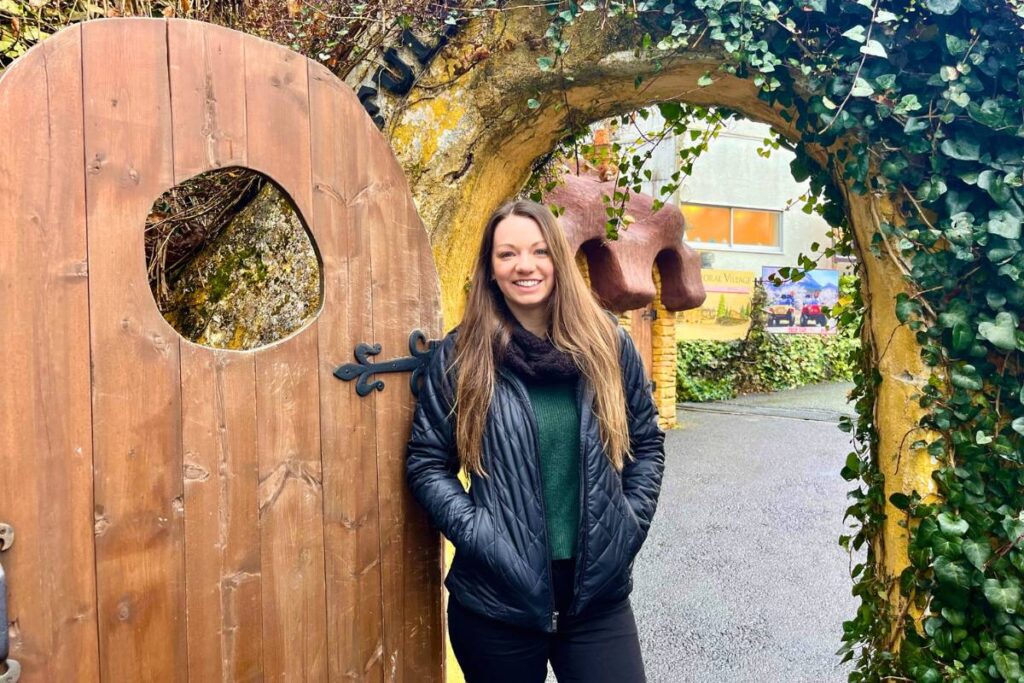
Here are my thoughts on some commonly asked questions about visiting Beppu.
What is Beppu, Japan Known For?
One word: onsens! Beppu is the Onsen Capital of Japan and for good reason – it’s home to nearly 3,000 hot springs. In fact, there’s only one other place in the world that has a higher concentration of hot spring water and that’s Yellowstone National Park in the United States. Visitors to Beppu have the opportunity to not only view these stunningly vibrant hot springs, they can also bathe in some of them as well.
Is Beppu Worth Visiting?
Definitely! Beppu is a small city, but it still has a lot to offer. From its stunning onsens to its incredible scenery, delectable local cuisine, and unique culture, Beppu is an amazing destination – one that definitely deserves a spot on your Kyushu itinerary!
How Many Days Is Enough for Beppu?
Based on my experience, 2-3 days in Beppu is the perfect amount of time to take in the city’s highlights. Not only will you be able to visit the most popular attractions, but you’ll also have time to stop by the nearby city of Yufuin and sample a variety of local cuisine.
Is It Better to Stay in Beppu or Yufuin?
Either is a great option to consider. I personally really enjoyed staying in the city of Beppu, because there are a lot of restaurants, bars, and cafes within walking distance – especially near Beppu Station. Attractions are also easier and more convenient to reach. However, Yufuin is home to a large number of Airbnbs, many of which come with their own private onsens.
Do I Need a Car in Beppu?
If possible, I do recommend renting a car when visiting Beppu. While you can get around with public transit, it’s easier and much more convenient when you have your own means of transportation. Alternatively, you can also rely on taxis and supplement them with public buses to help cut down on expenses.
What Is the Difference Between an Onsen and a Hot Spring?
While some believe that “onsen” is merely the Japanese word for “hot spring,” it’s a little bit more complicated than that. Yes, an onsen is a hot spring, but it’s a hot spring that meets certain requirements. Generally speaking, in order to be considered an onsen, a hot spring must reach at least 77°F (25°C) and it must contain a specified amount of certain beneficial minerals, such as calcium, iron, and magnesium.
Final Thoughts: Beppu Itinerary
So there you have it – my recommendations for 2 days in Beppu! Hopefully, this guide is helpful in planning your own trip to the Onsen Capital of Japan.
Regardless of what you decide to do, you’re bound to have an amazing time! After all, Beppu is an unforgettable destination – one that offers a truly unique glimpse into Japan’s onsen culture!
Are you planning your own Beppu itinerary? What are you most excited to do? Let me know in the comments below!
Enjoy this Beppu itinerary? Pin it now for later!
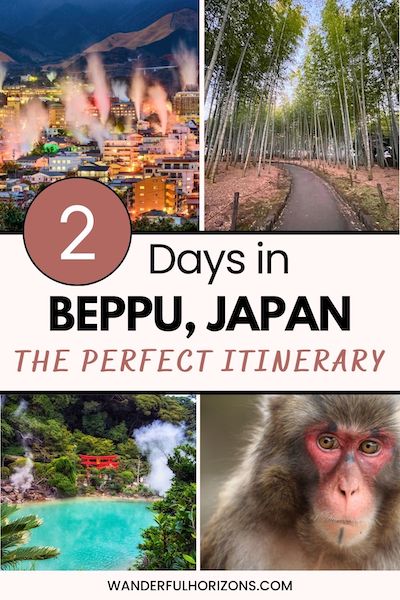
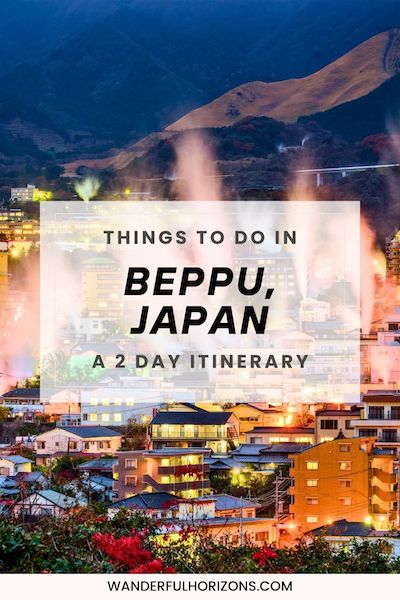
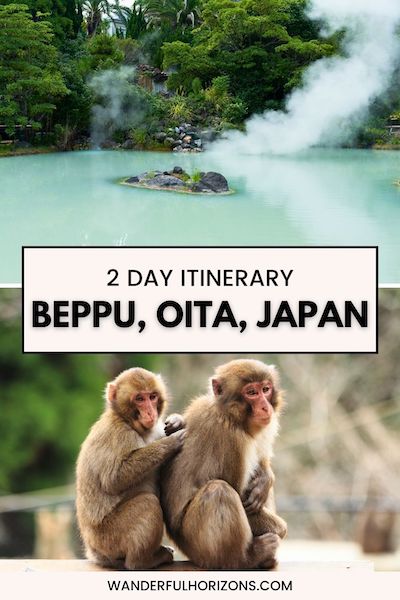

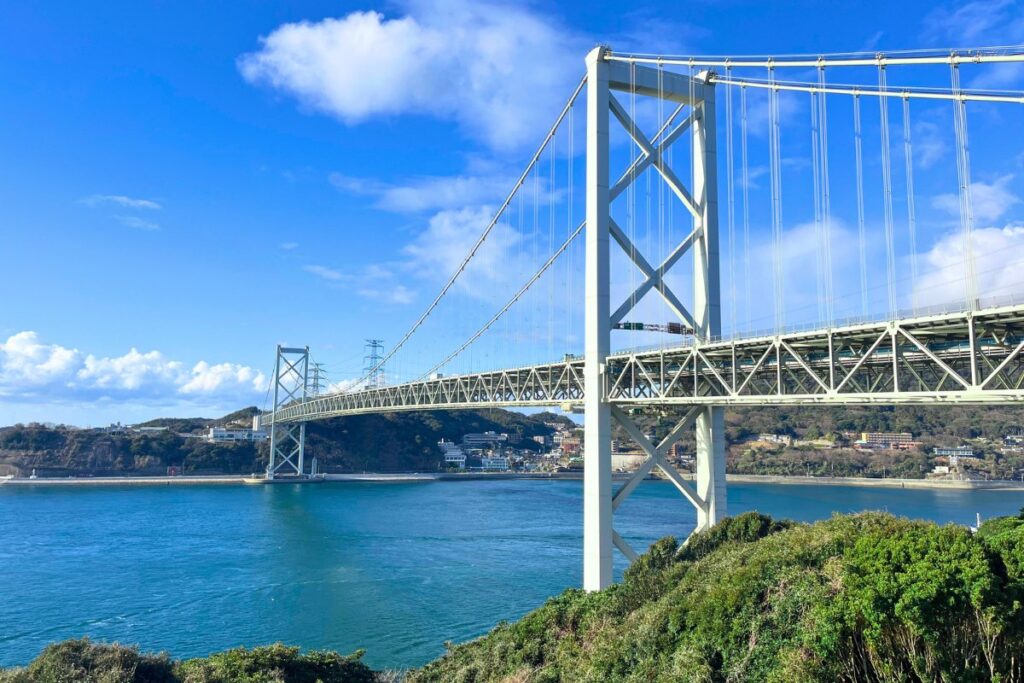
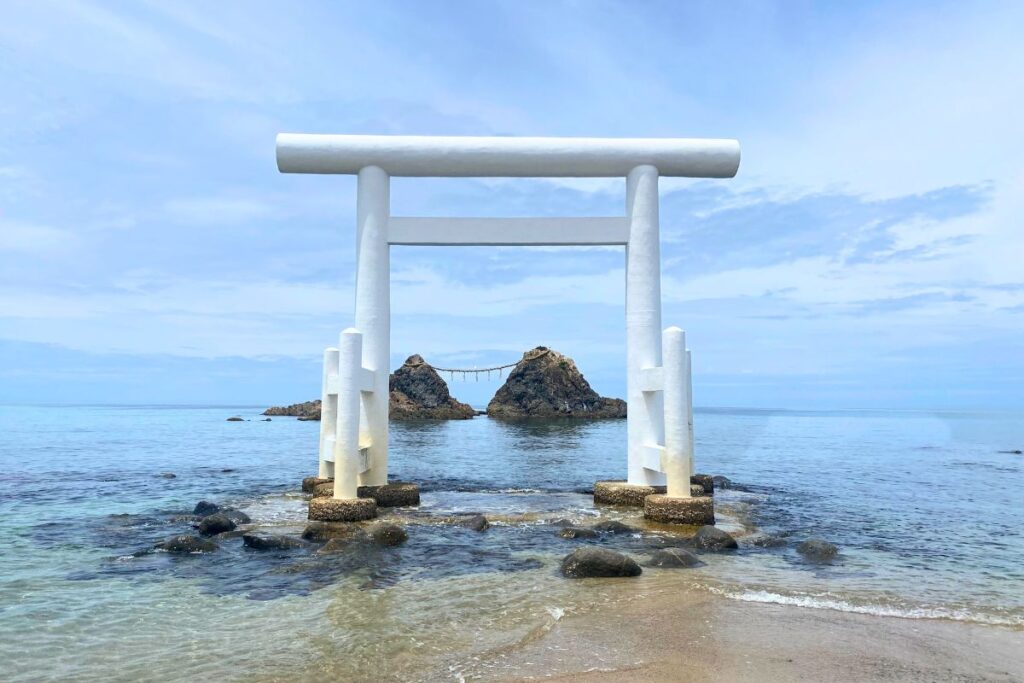
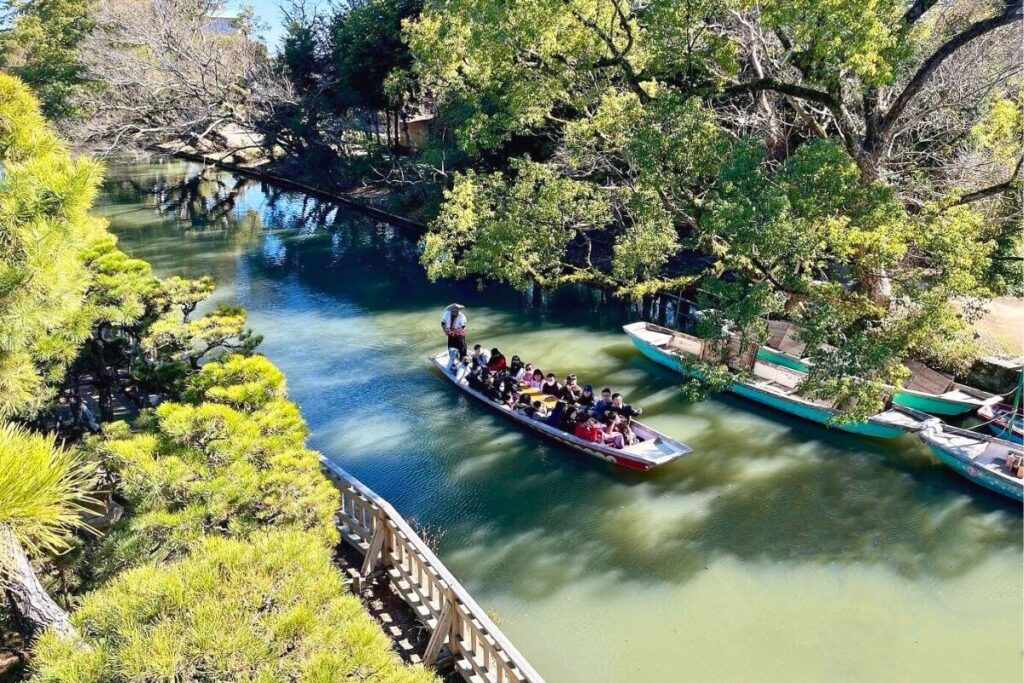
תודה רבה 🙂 עזרת לי מאוד! אני כאן עכשיו!
You’re welcome! I hope you enjoy your time in Beppu!!
This is exactly the kind of guide and tips I’ve been looking for! Thank you for such a helpful guide
You’re welcome! I’m glad you found it helpful!
Just searching to plan where what how for recommendation city to visit in Japan, came across your articles, i found it’s very very very helpful. Definitely will use your guidance for our trips. Thank you.
You’re most welcome – I’m happy to help! Feel free to reach and ask any question you may have as you plan your trip!